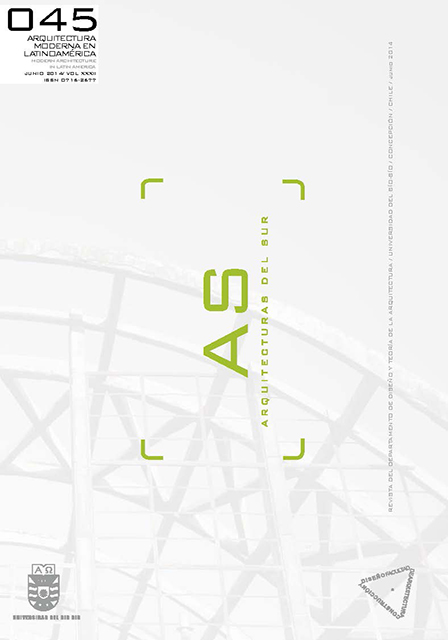Eladio Dieste and the reinforced ceramic: Shape and structure
Keywords:
Eladio Dieste, reinforced ceramic, structural art, gaussian vaults, self-supporting vaultsAbstract
The work of engineer Eladio Dieste has yet to be contextualized. The inventor of reinforced ceramic in Uruguay, he transformed this material into an efficient, economic and elegant alternative to reinforced concrete. Dieste changed the conception of brick as a filler material that can only be used under compression by using it to produce visually surprising shapes and in elements under flexure.
Parallelisms between Dieste’s work and Catalan vaults are mistaken, as the only coincidence is the use of brick. Dieste took it upon himself to deny this similarity when asked about the matter: “The origin of reinforced ceramic did not come from it [the Catalan vault]. Instead, the source can be found in reinforced concrete structures, in fast stripping techniques; that is the basis of the structures. The coincidence between aspects of the final result and some Catalan shells does not mean that reinforced ceramic was inspired by the timbrel vault. It has nothing to do with it.”
The aim of this paper is to define the relationships between Dieste’s reinforced ceramic and the reinforced concrete shells that inspired his work and identify the contributions that transformed reinforced ceramic into a new building material capable of producing a new way of making architecture.
Downloads
Downloads
Published
How to Cite
Issue
Section
License
The content of the articles published in each issue of Arquitecturas del Sur is the sole responsibility of the authors and does not necessarily represent the opinion of University of the Bío-Bío.
The authors will maintain their copyright; however, they will guarantee the journal the right to first publication and dissemination of their work. The publication of the article in Arquitecturas del Sur will be subject to the Creative Commons International license (CC BY-SA) that allows others to adapt: remix, transform and build on the material for any purpose, even commercially; share: copy and redistribute the material in any medium or format, as long as the authorship and first publication in this journal are acknowledged by citing them correctly, and their new contributions are under a license with the same terms.














 Programa de Información Científica/Concurso Fondos de Publicación de Revistas Científicas 2018/ Proyecto Mejoramiento de Visibilidad de Revistas UBB (Código:FP180007)
Programa de Información Científica/Concurso Fondos de Publicación de Revistas Científicas 2018/ Proyecto Mejoramiento de Visibilidad de Revistas UBB (Código:FP180007) 
